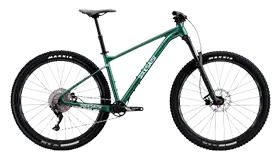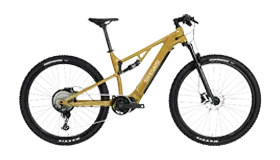Everything you need to know about mountain bikes
Mountain bikes are fun and exciting form of transportation for exploring the great outdoors. Whether you're a beginner or an experienced rider, choosing the right mountain bicycle is critical to a safe, enjoyable ride. Next, take you to learn about mountain bikes.

Types of mountain bikes
Mountain bikes can be roughly divided into the following categories:
Cross Country (XC) Bikes
Trail bikes are designed for speed and efficiency on flat, rolling terrain. Their light weight and narrow frame make them ideal for racing and long-distance riding.
Dirt Bikes
Trail bikes are designed for a variety of terrain, including steep climbs and descents. They have a slacker geometry than XC bikes, which makes them more comfortable to ride on rough terrain.
Enduro Bikes
Enduro bikes are designed for aggressive riding on technical terrain. They have longer-travel suspension and slacker geometry, which makes them more stable at high speeds.
Downhill Bikes
Downhill bikes are designed for extreme downhill riding. They have a full suspension system and very slack geometry, which makes them more stable at high speeds and on steep descents.
Factors to Consider When Choosing a Mountain Bike
When choosing a mountain cycle, you should consider the following factors:
RIDING STYLE
Consider your riding style and the type of terrain you will be riding on. If you plan to race or ride on flat terrain, an XC bike may be the best choice for you. If you plan to ride on technical terrain, a trail or enduro bike may be a better choice.
Frame Material
Mountain bike frames can be made from a variety of materials, including aluminum, carbon fiber, steel and titanium. Each material has its own unique advantages and disadvantages, so it's important to choose the one that suits your needs and budget.
Suspension System
Mountain bikes can be equipped with front suspension (hardtail) or front and rear suspension (full suspension). Full suspension systems are more expensive but offer better comfort and control over rough terrain.
Wheel Size
Mountain bike wheels come in a variety of sizes, including 26 inches, 27.5 inches, and 29 inches. Larger wheels offer better stability and are easier to roll over obstacles, but they can be heavier and accelerate more slowly.
Where to Buy Mountain Bikes
Our company provides personalized service and support to meet customers' mountain bike needs, providing customers with a wider selection at lower mountain bike prices.
How to maintain your mountain bike
Maintaining your mountain bike is critical to safety and performance. Here are some tips for keeping your bike in good shape:
Clean your bike regularly
Dust and grime can damage your bike's components over time. Clean your bike regularly with soap and water to keep it in good shape.
Lubricate moving parts
Lubricate your bike's moving parts regularly to prevent wear. Use a high-quality lubricant designed for the specific parts of your bike.
Check your brakes
Brakes are critical to riding safety. You are required to check your brakes regularly and replace worn brake pads or cables as necessary.
Check your tires
The tires are the only part of the bike that comes into contact with the ground. Check tires regularly for signs of wear and replace if necessary.
Conclusion
Choosing the right mountain bike can be overwhelming, but with this article you should be able to make an informed decision about which bike is right for you. When choosing a bike, consider your riding style, frame material, suspension system and wheel size, and don't forget to maintain it regularly to ensure optimal performance and safety on your ride.










